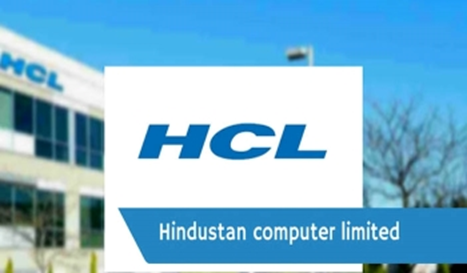Technology
Code Obfuscation – Ensuring Advance Level Security Systems For The Applications

The whole concept of code obfuscation always aims to provide the best quality security mechanisms to the applications so that modifications become very much executable and the application is of no use to be a hacker but ultimately it will remain fully functional. With this particular process, several kinds of modifications into the actual method instructions or data can be done which will never make any kind of alterations into the output of the program. Almost every kind of code can be reverse-engineered in case people invest proper time and effort in it.
The software applications and programs have changed how they were operated by business organisations a few years back. One of the most effective ways to implement proper protection in the application from the reverse engineering and the code tempering is the strengthening of defensive capabilities which is only possible in case the application is made harder to penetrate and it forces the hackers to move to another target very easily.
The code obfuscation can be termed as the best possible defensive method which helps in modifying the code of the application and further make it very much difficult to understand as well as decipher. The most important part of this particular system is that it will stop the hackers to reverse engineer the application and will make sure that the structure of the application is very difficult to understand. It will also handle the code with the help of multiple layers of security which will ultimately help in protecting the intellectual property and will make sure that attackers are kept away from the malicious intent. This particular concept will always work with the help of encryption of the code that will help in making sure that metadata is never revealed and renaming is successfully done. It will also employ various kinds of techniques that will be built on top of each other and will help in rendering the codes into unintelligible systems. Some of the most common techniques utilised in this particular system are mentioned as follows:
- The rename obfuscation: Under this particular method modification of the variable and method has been done to make sure that the code is very difficult in terms of understanding. Ultimately it will help in maintaining the programs original behaviour so that there is no issue in the whole system.
- The string encryption: Under this particular system the renaming obfuscation is very well implemented in altering the variables and methods which are known as string encryption. It is also based upon randomly generating the algorithms to encrypt all kinds of strings which are very well readable.
- The flattening of control flow: This particular technique is very much successful in implementing the operation perfectly to achieve this particular system transformation is perfectly done so that program flow is controlled all the time. It will always make sure that program flow is very difficult to follow because of the natural conditions and the code is very easy to read with this.
The execution of the code obfuscation process includes a comprehensive process and the implementation will always vary depending upon company to company. There are several kinds of things to be kept in mind at the time of determining the evaluating and comparison of these kinds of tools. On a general basis good tools are very much important to be implemented by the security solutions so that it includes the following things:
- It will help in narrowing down the methods and techniques to be used in the obfuscation process.
- It will help in tuning the degree of obfuscation to balance the performance impacts
- It will help in withstanding the de-obfuscation tools in the whole process
- It will help in obfuscation through the string tables as well as the methods of the whole process.
Following are some of the benefits of the code obfuscation concept:
- The most important advantages stem from how security-based systems are being implemented by the organisations.
- In the untrusted environment it is highly advisable to deploy the applications that are obfuscated to that it becomes harder for the hackers to review several kinds of codes so that application analysis can be done.
- The implementation of this process will always ensure that there is no loophole in the whole system which is left for the debugging and tampering of the codes.
- These kinds of processes will always make sure that there is a higher level of a layer of protection which is indispensable for the applications and helps in dealing with the most critical consumer and business information for the organisation.
- Optimisation of the code will always be there with the help of this particular system and the best word is that there will be no complication throughout the process and the compilation process will be speeded up which will ultimately result in quicker execution of the code.
- One of the greatest advantages of implementing this particular concept is that applications are always hard to reverse engineer that will make sure that code deployment in the open source platforms will not be a very now.
- With the help of this particular technique the security team will be applying several kinds of obfuscation algorithms with the output depending upon previous algorithm servings so that attackers never get confused about the original intent of the program and what kind of things are visible to them.
The code obfuscation can be termed as one of the most practical ways of handling the threats associated with the applications and it will always make sure that hackers are unable to access the application because everything is based on actual measurements in terms of effectiveness which are very hard to find. Many of the companies utilise this particular concept for several proprietary reasons and with the advancements in technology, it is very much important for the companies to implement such things so that they can make sure that performance factors are always there and applications are very well safe and secure all the time so that all security-related needs can be fulfilled.
News
Elon Musk Announces Tesla Robotaxi To Be Unveiled On August 8

In a surprising turn of events, Elon Musk announced that Tesla will introduce its much-awaited Robotaxi on August 8, 2024. Interestingly, Musk has a never-ending desire to introduce more self-driving vehicles; however, his dream has not been fulfilled.
Now, the billionaire has announced his plans for Robotaxi on his self-owned platform. He simply wrote on X, “Tesla Robotaxi unveil on 8/8,” and did not give further details about the product.
Moreover, Musk has always been quite vocal about his plan for a car that requires no human control. Not long ago, he shared a tweet about cars with full self-driving features.
He wrote,
Most people still have no idea how crushingly good Tesla FSD will get.
It will be superhuman to such a degree that it will seem strange in the future that humans drove cars, even while exhausted and drunk!
Cars will take you where you want automatically, just like getting in an…
— Elon Musk (@elonmusk) March 29, 2024
In April 2019, Musk first discussed his vision for Robotaxis and revealed that Tesla expects to start its operation in 2020. Clearly, it did not happen.
However, Musk had also shared his unpredictable timetable. He said,
Only criticism, and it’s a fair one, [is that] sometimes I’m not on time.
But I get it done, and the Tesla team gets it done,
Several reports suggest that the Robotaxi news was shared with the employees in February of this year, and they were ordered to shift their entire focus to Robotaxis. urstoryiq.com This also led to a decrease in the production volume of entry-level vehicles.
After Elon Musk’s tweet on April 6, 2024, his company’s shares increased by more than 3%. Notably, Tesla’s shares dropped significantly in the last quarter because of the constantly increasing competition.
See also : Beyoncé Earns Eighth No. 1 Album On Billboard 200 With ‘Cowboy Carter’
Education
Full Form of http || HTTP Full Form

The HTTP Full Form: The Protocol for Internet Communication 4 you
The HTTP Full Form is Hypertext Transfer Protocol. HTTP is one of the fundamental building blocks of the World Wide Web. Its complete form is Hypertext Transfer Protocol, and it was created in 1989 by Tim Berners-Lee. HTTP is a communication protocol that lets you browse web pages, images, videos, and other media stored on servers in different parts of the world without downloading them to your device.

Definition and Overview of HTTP || full form of http
Education
HCL Full Form: Unveiling the IT Giant’s Identity
-
Technology6 years ago
Developing Workplace Face Recognition Devices and Controls
-

 Business News5 years ago
Business News5 years agoFacts to know about commercial closing
-
Home Advice6 years ago
Things to Remember When Shopping For Recycled Plastic Adirondack Chairs
-
Technology6 years ago
Use WhatsApp Web Login on PC
-
Entertainment6 years ago
Meanings of WhatsApp Symbols, Emoticons
-

 Education5 years ago
Education5 years agoHuman Body And Its Interesting Features
-
Entertainment6 years ago
Ganesh Chaturthi Songs (Mp3, DJ Songs, Remix) Ganpati Songs Free Download
-

 Sports News4 years ago
Sports News4 years agoHow to Build a Perfect Fantasy Cricket Team?









